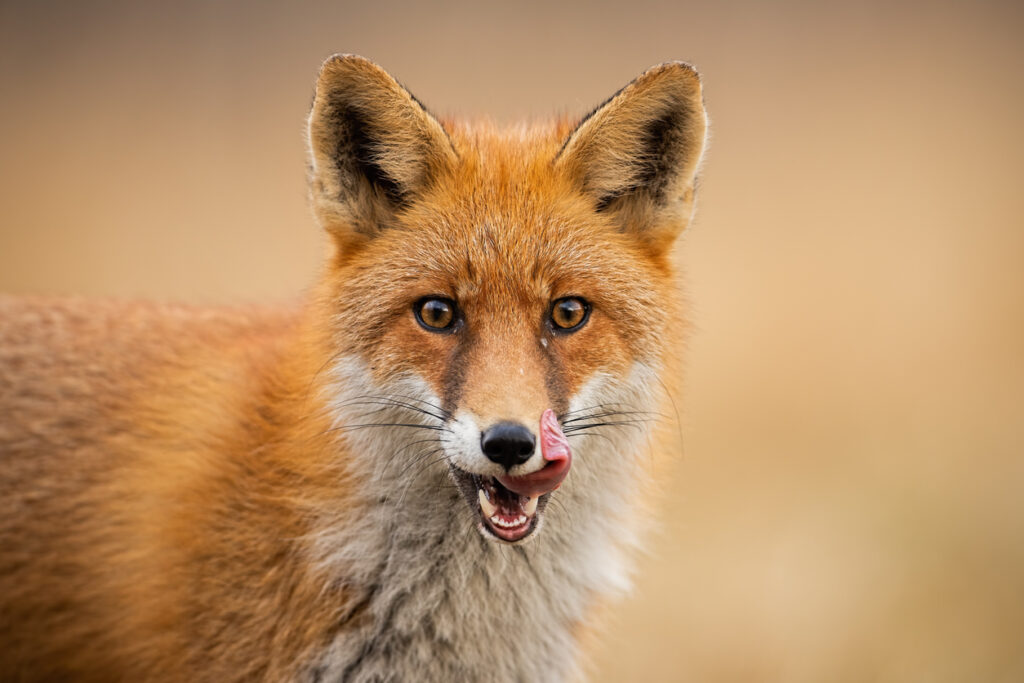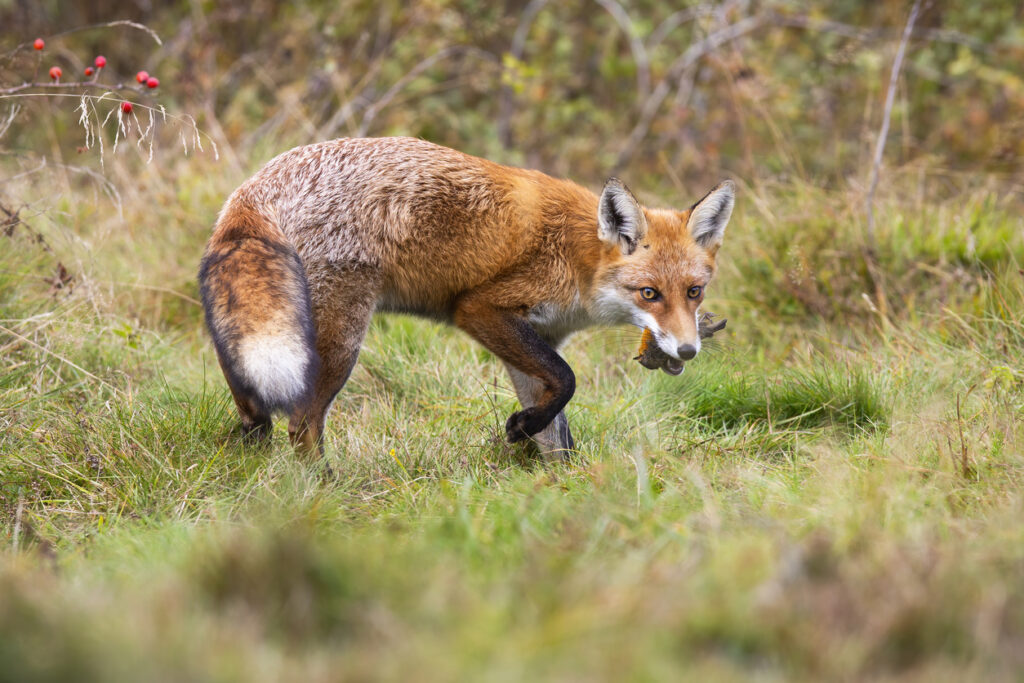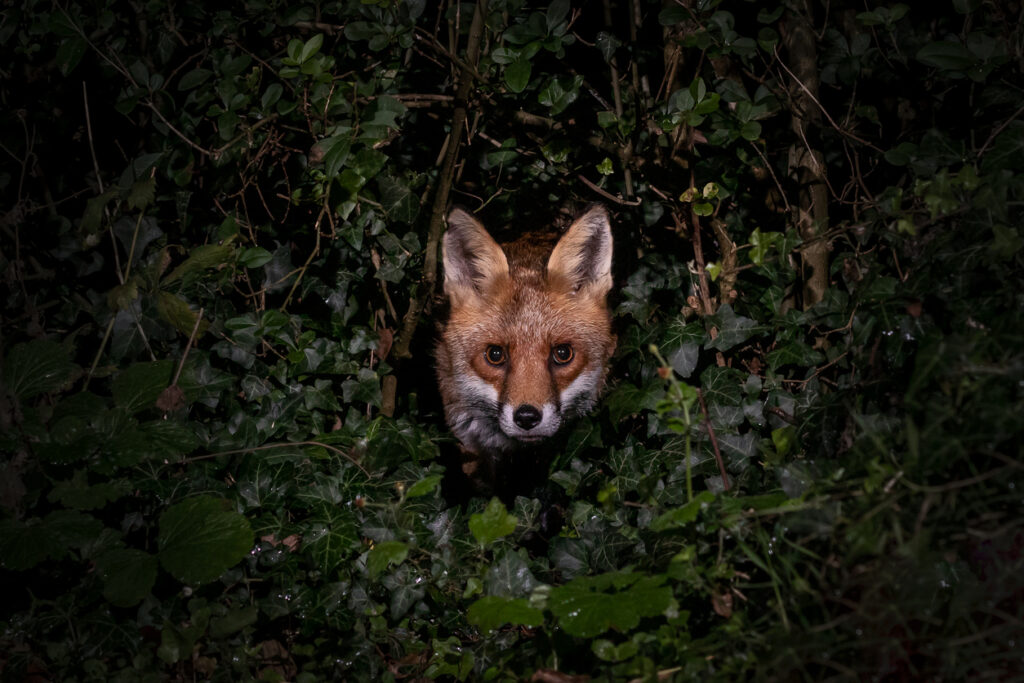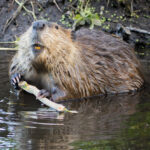
Foxes are known for their cunning nature, adaptability, and ability to survive in diverse environments. Foxes are smart, adaptable, and always ready to make the best of any situation. Whether they’re out in the countryside or going through city streets, their diet is as flexible as they are.
But what exactly do foxes eat, and how does their diet change depending on where they live? This article will explore what foxes eat, how their diet shifts between rural and urban areas, and some fascinating facts about these clever creatures’ eating habits.
Foxes: The Ultimate Omnivores
Foxes are omnivores, which means they eat both plants and animals. Their diet is opportunistic, allowing them to take advantage of whatever food is available, whether it’s a small mammal, a fruit, or even discarded human food in urban areas. This adaptability in their diet is key to their survival and success in a wide range of environments.
Diet Of Rural Foxes: A Hunter’s Feast

In rural and woodland areas, foxes primarily feed on live prey. These foxes are natural hunters, and their diet consists of around 95% meat. Their primary prey includes small mammals such as rabbits, mice, voles, and squirrels. Rodents make up a significant portion of their diet because they are abundant and easy to catch. Foxes also prey on birds, especially ground-nesting species or those that can’t escape quickly. Sometimes, larger foxes have even been known to hunt deer fawns.
However, rural foxes don’t limit themselves to just meat. They are opportunistic feeders and will consume insects like beetles, earthworms, seasonal fruits, and berries. During the summer and fall, when fruits like blackberries and apples are plentiful, foxes will readily incorporate them into their diet. This gives them a balanced intake of nutrients and helps them thrive in the wild.
Diet Of Urban Foxes: A Scavenger’s Buffet
In urban areas, foxes have adapted remarkably well to city life. While they still hunt small animals such as rats and pigeons, their diet also includes a lot of food that comes from humans. This might be leftovers from trash bins, discarded fast food, or even pet food left out overnight. Studies suggest that around 18% of an urban fox’s diet comes from human household waste, making them more scavengers than hunters in city environments.
And here’s something interesting—urban foxes eat more insects and fruit than their country cousins. This is likely because insects are more abundant in cities’ gardens, parks, and other green spaces. They also take advantage of fruit trees and gardens, often snacking on grapes, plums, and pears. While these foxes might not have to hunt as much as rural foxes, their ability to adapt to whatever food is available is what makes them so successful in urban environments.
Seasonal Changes In Fox Diet
The diet of a fox also changes with the seasons. During the spring and summer, when food is plentiful, foxes enjoy diverse food options. They hunt small animals, eat fruits, and even catch insects. However, when winter arrives and food becomes scarce, foxes rely more on scavenging and carrion (the remains of dead animals). They often scavenge for food left behind by other animals or humans and are not picky about what they eat during this time.
In rural areas, foxes may feed on the remains of large animals like deer left behind by hunters or natural causes. In cities, they might frequently rummage through trash bins, taking advantage of any food they can find.
Fun Facts About Foxes’ Eating Habits
- Food Storage: Foxes are known to cache their food, especially when they have more than they can eat at one time. This involves burying excess food to save it for later, ensuring they have something to eat when food is scarce.
- Lazy Scavengers: While foxes are capable hunters, they prefer to scavenge when possible, as it requires less energy than hunting. This makes them highly efficient in both rural and urban settings.
- Fruit Lovers: Despite their high-protein diet, foxes enjoy fruits, particularly apples and berries. These fruits provide essential vitamins and are an important part of their diet, especially during the fall.
Do Foxes Eat Pets?

Ever wondered if foxes are a threat to your pets, especially in the city? While foxes are opportunistic hunters, they rarely attack domestic animals like cats or dogs. Foxes are typically no match for healthy adult cats, as cats are equipped with sharp claws and strong defensive instincts. It’s very uncommon for a fox to attack a cat, but a young kitten left outside might be vulnerable. Similarly, small dog breeds, like teacup poodles, might attract a fox, but such cases are rare.
Foxes are more likely to prey on small animals like rabbits or guinea pigs if they are left outside in poorly secured hutches. Chickens, too, are at risk if their coops are not properly locked, as foxes have a reputation for breaking into hen houses. This behavior, though often seen as cruel, is a natural instinct—foxes will kill more than they can eat at one time and store the excess food for later.
Conclusion:
Foxes are highly adaptable, thriving in rural and urban environments by making the most of available resources. In the wild, they hunt and scavenge small mammals, birds, and insects; in cities, they add human waste and fruits to their diet.
Their role in controlling rodent populations and aiding seed dispersal showcases their resilience. So next time you see a fox, whether it’s in the wild or wandering through your neighborhood, remember—it’s an expert at adapting to whatever life throws at it.
- What Do Squirrels Eat? Learn About Their Diet and Winter Survival - October 14, 2024
- What Do Raccoons Eat? Discover Their Diet and Eating Habits - October 6, 2024
- What do foxes eat? - October 5, 2024








